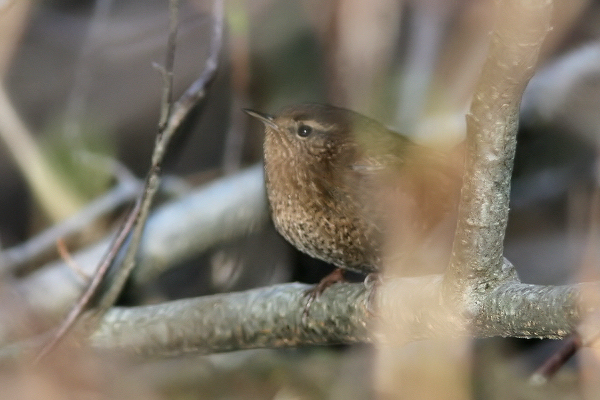
Date: 2005-12-10
Lens: Canon 300mm IS F4 + 1.4x II Converter

 Winter Wren
Troglodytes troglodytes
Winter Wren
Troglodytes troglodytes
 Description
Description
Of the 59 species of wren, the Winter Wren is the only one that lives outside of the New World. It's believed that the wren may have expanded its range by crossing the Bering Sea land bridge some two million years ago. The Winter Wren is a quick moving little bird that creeps, like a mouse, through the low, dense tangles covering the forest floor. Winter Wrens feed on insects.
The Winter Wren's song is complex, often composed of 30 to 50 individual notes and trills, and is often sung so rapidly that they're difficult to distinguish. When recorded and played back at half- or quarter-speed, the songs reveal a remarkable blend of halftones and overtones all sung at the same time. Western birds sing faster and have more complex songs than their eastern counterparts.
Dark cinnamon-brown upperparts. Buff breast. Dark barring on belly, wings, tail, and undertail coverts. Short, pointed, slightly down-curved bill. Indistinct supercilium. Very short tail; frequently held upright. Pink legs. Western birds are darker, with more rufous underparts and have a straighter bill. Sexes similar. 4 to 4.5 inches in length.
Dense brush piles, root tangles, and along stream banks in coniferous and mixed forests.
 Nesting
Nesting5-7 white eggs with brown speckles. The eggs have a 11-16 day incubation period. Fledging occurs in 19 days. The nest is a bulky mass of twigs, moss and lined with softer material. It has a side entrance and is built on or near the ground; often concealed among the upturned roots of a fallen tree.